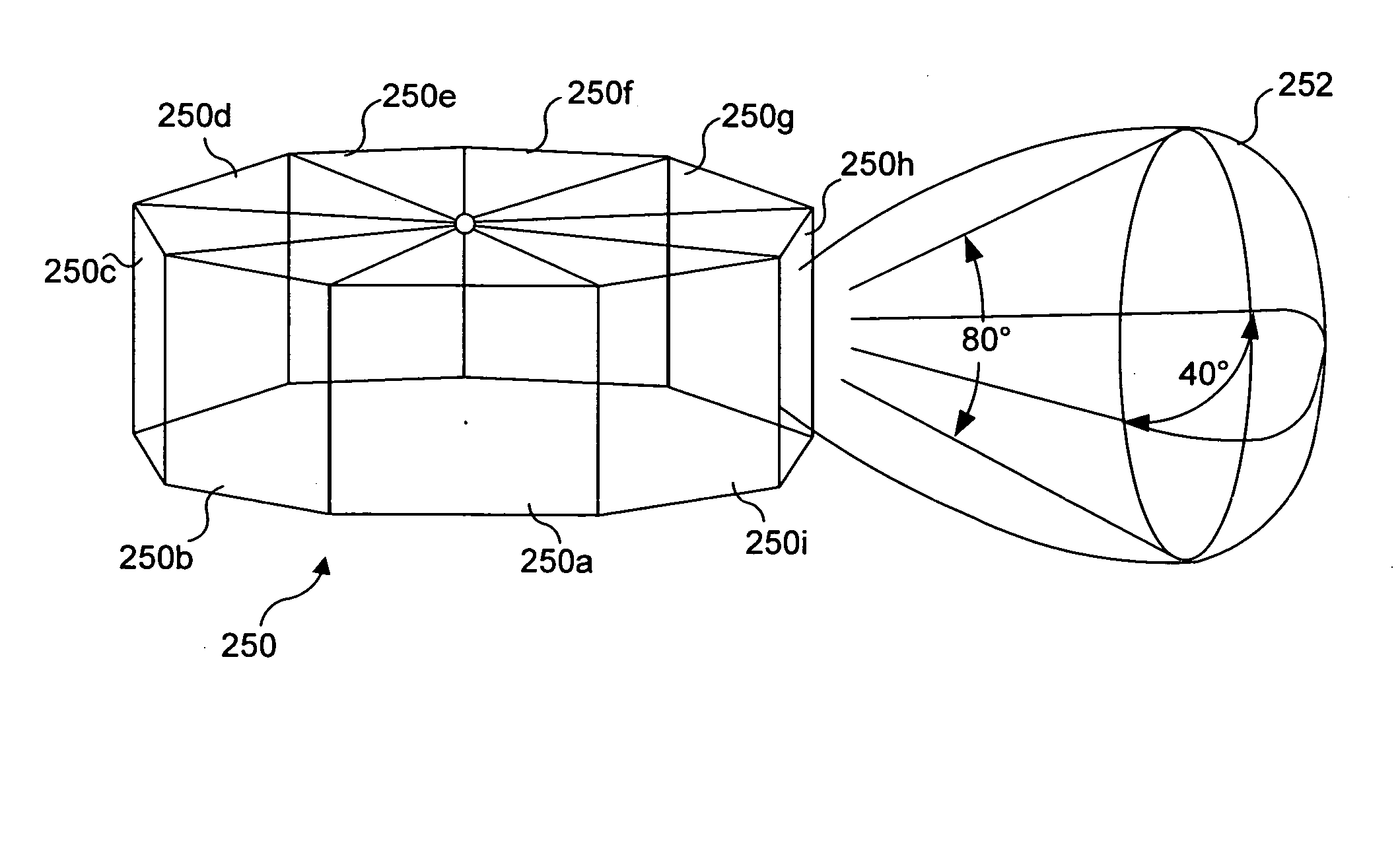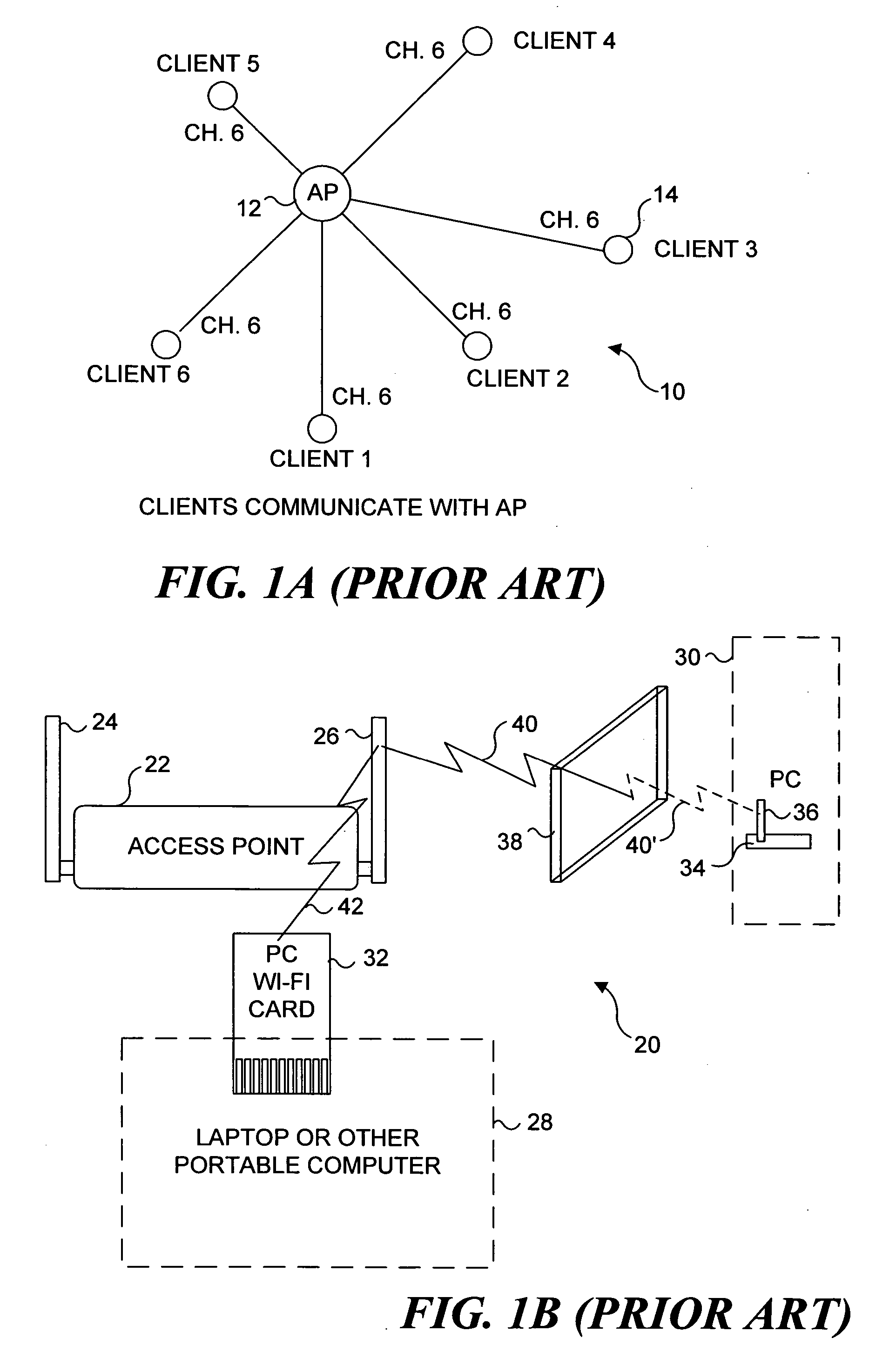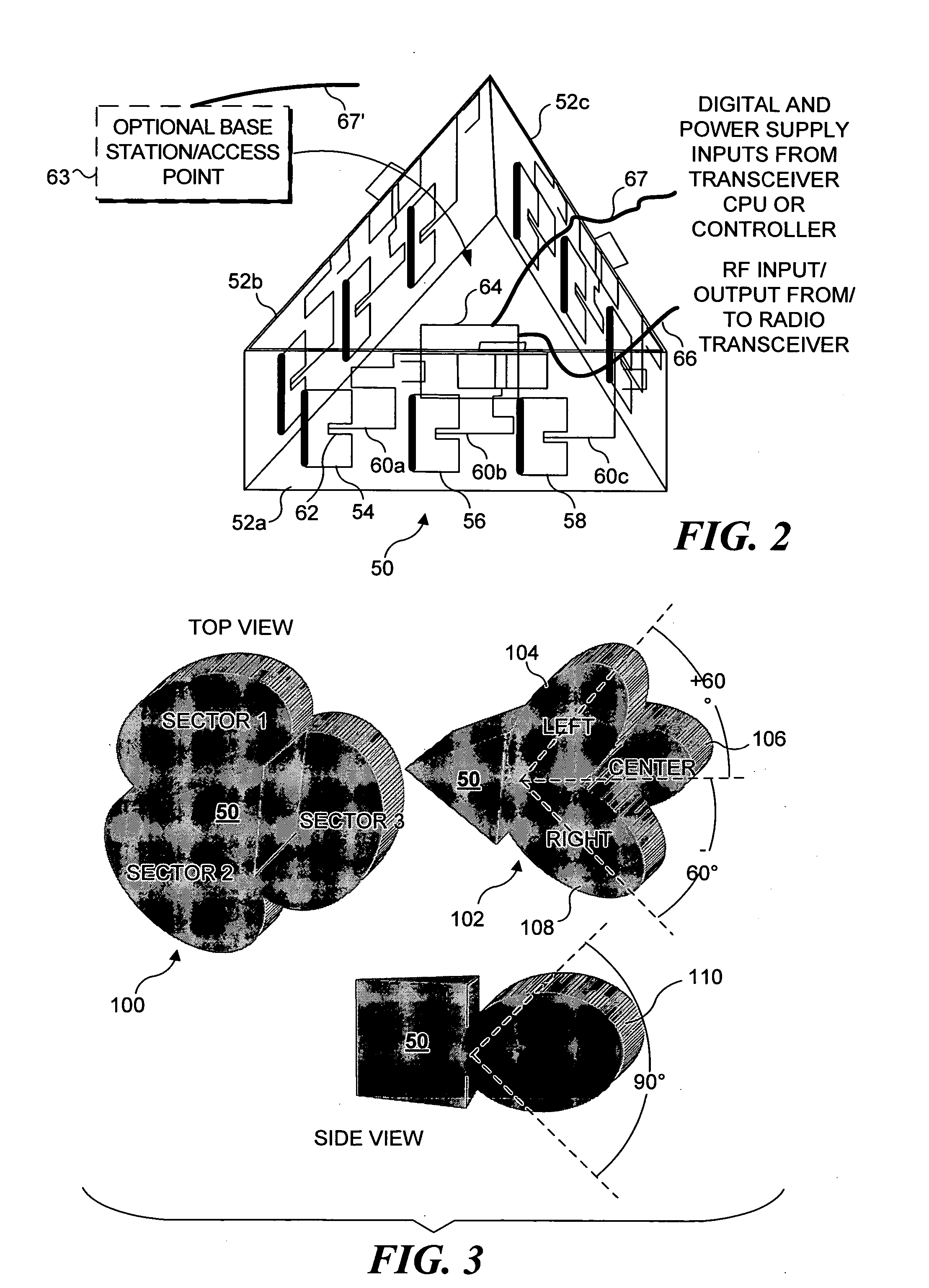Electronically steerable sector antenna
a technology of electromagnetic steering and antennas, applied in the direction of antennas, antenna details, substation equipment, etc., can solve the problems of not meeting the expectations of such systems, achieving adequate rf coverage at a desired data throughput, and increasing the equipment cost of each additional access point, so as to achieve the effect of improving the data rate of the channel for communicating wireless data and greater signal strength
- Summary
- Abstract
- Description
- Claims
- Application Information
AI Technical Summary
Benefits of technology
Problems solved by technology
Method used
Image
Examples
Embodiment Construction
[0024] As briefly discussed above, in the Background of the Invention, conventional wireless networks often experience significant problems in providing acceptable signal strength and data rate. A typical wireless network 10 is illustrated in FIG. 1A (Prior Art). In this wireless network, an access point 12 is coupled to a plurality of client devices 14 and communicates bidirectionally with the client devices using transceivers conforming to the IEEE 802.11(a, b, or g) specifications. As is often the case, client devices 14 are distributed around access point 12 in various positions and at various distances. Indeed, client devices are often mobile and therefore, their position may frequently change in regard to access point 12. For this reason, most client devices and access points are provided with one or more omni-directional antennas (not shown in this Figure) to ensure that the RF signal being propagated between the client devices and the access point is receivable from any dire...
PUM
 Login to View More
Login to View More Abstract
Description
Claims
Application Information
 Login to View More
Login to View More - R&D
- Intellectual Property
- Life Sciences
- Materials
- Tech Scout
- Unparalleled Data Quality
- Higher Quality Content
- 60% Fewer Hallucinations
Browse by: Latest US Patents, China's latest patents, Technical Efficacy Thesaurus, Application Domain, Technology Topic, Popular Technical Reports.
© 2025 PatSnap. All rights reserved.Legal|Privacy policy|Modern Slavery Act Transparency Statement|Sitemap|About US| Contact US: help@patsnap.com



